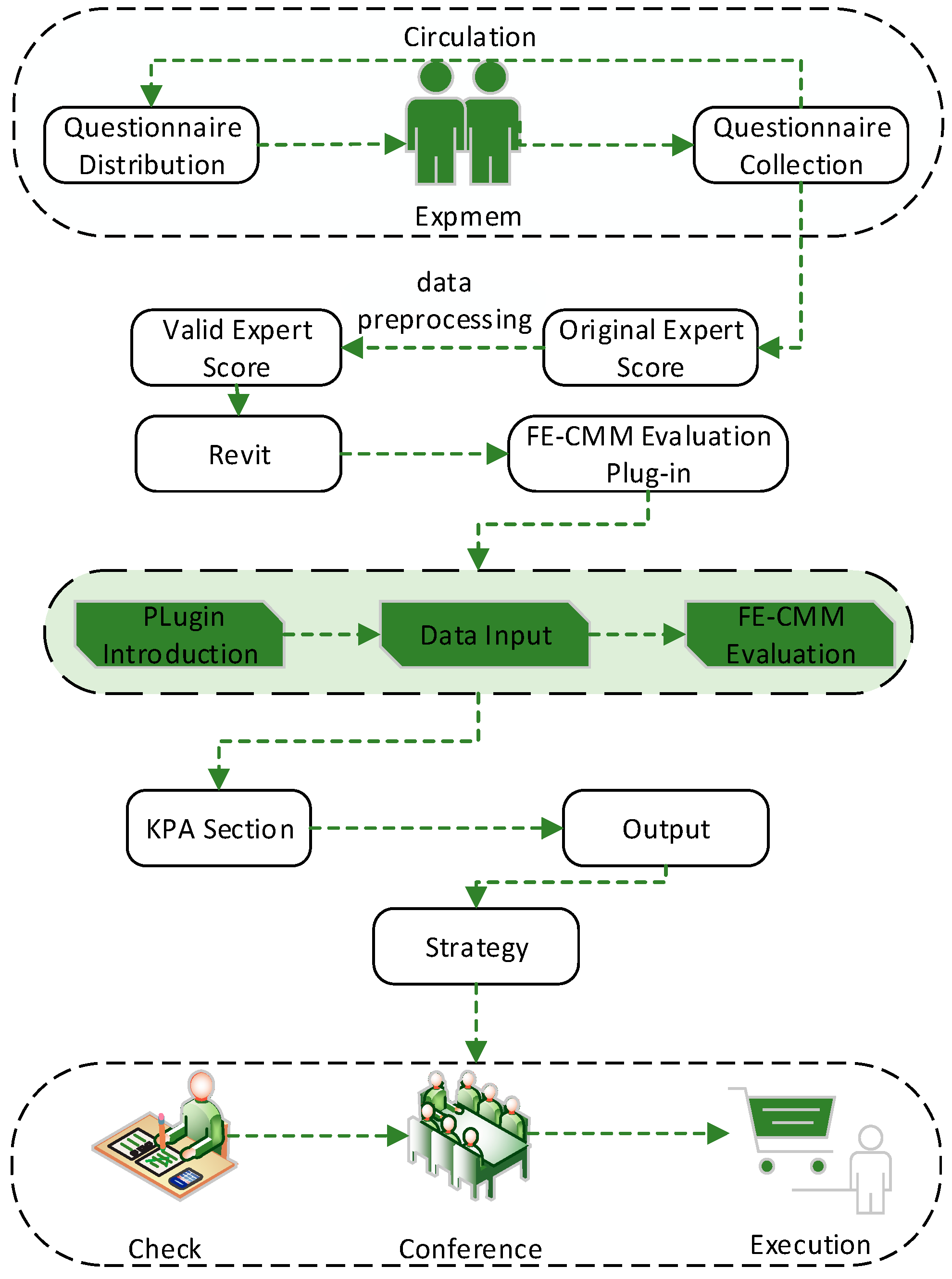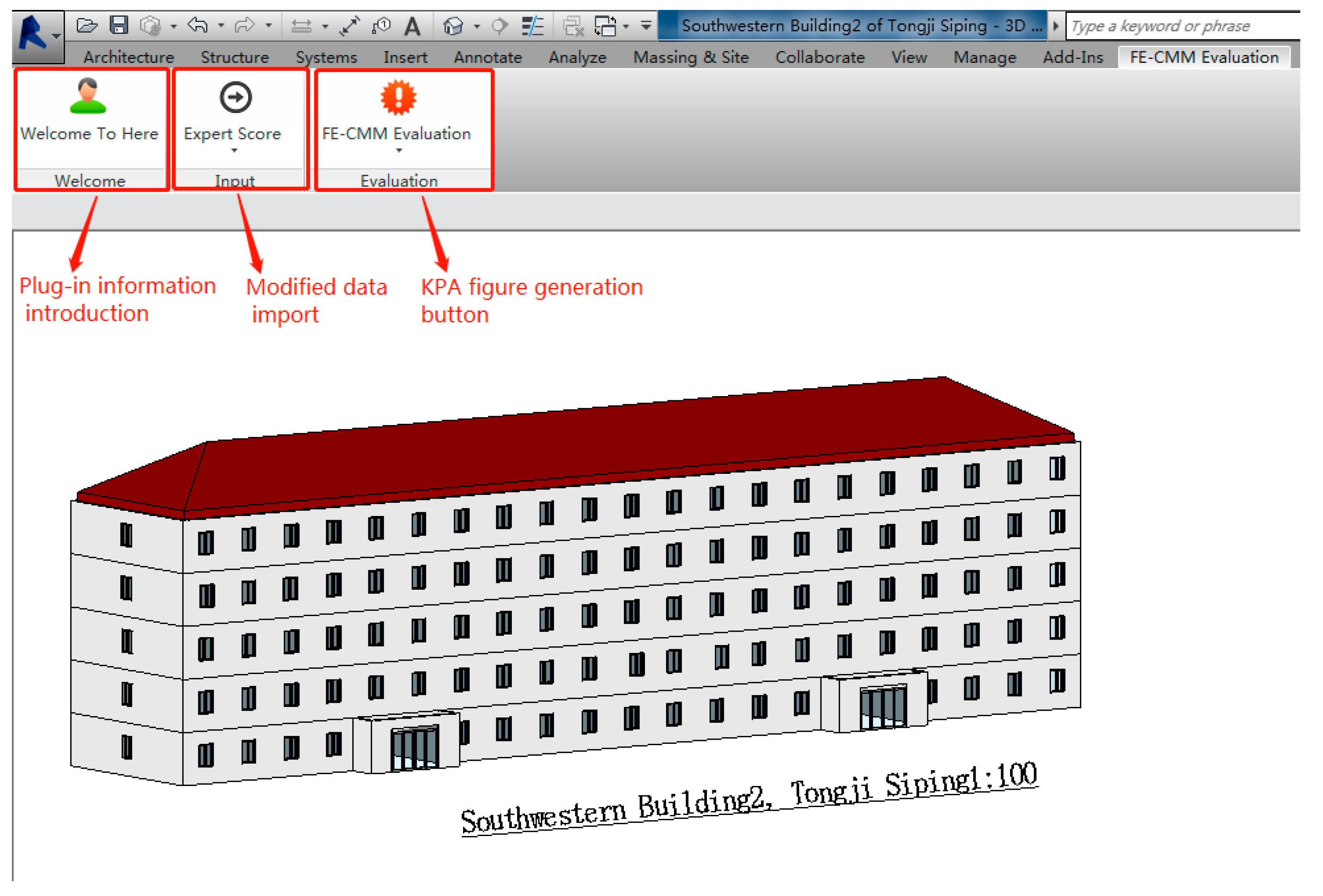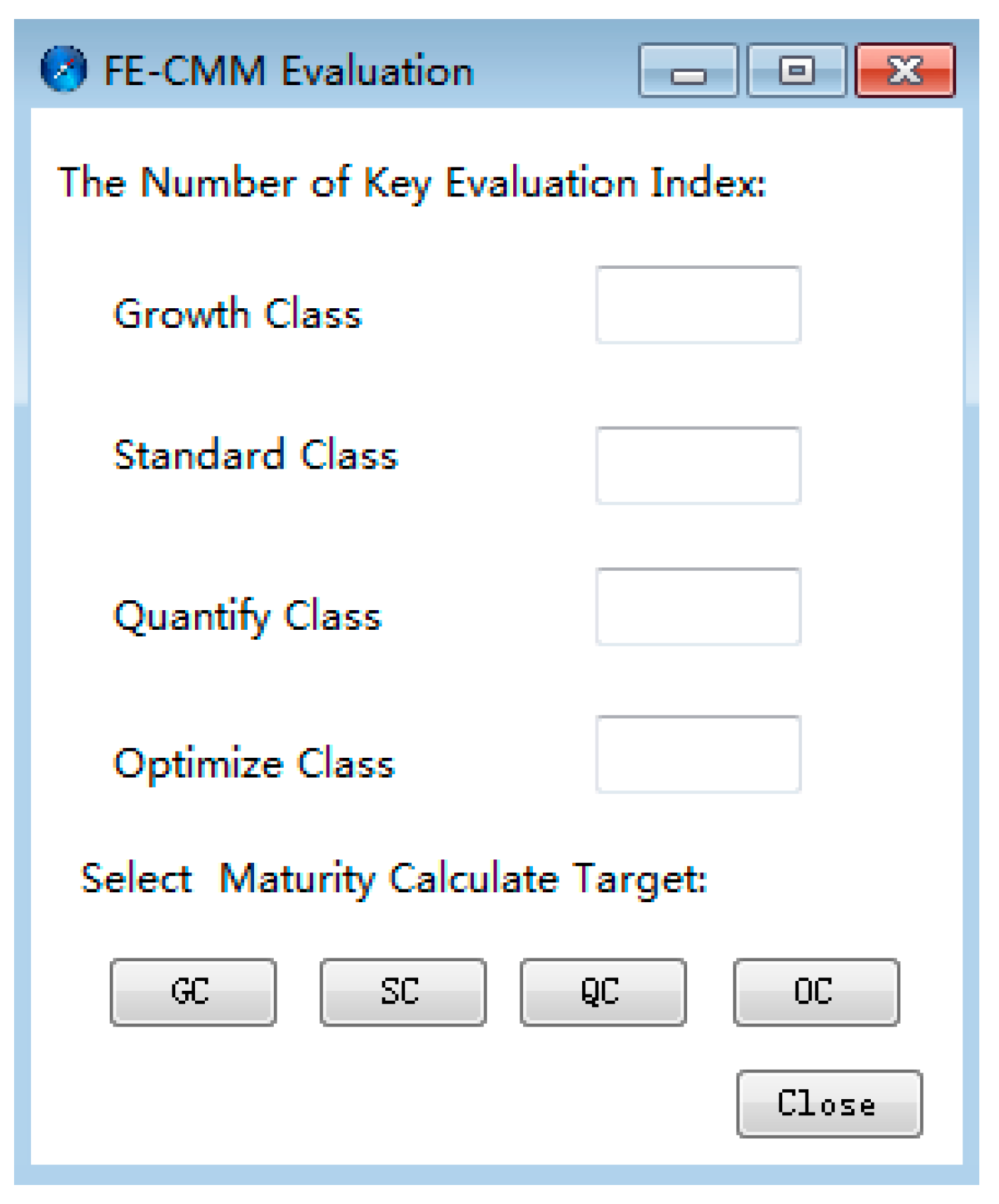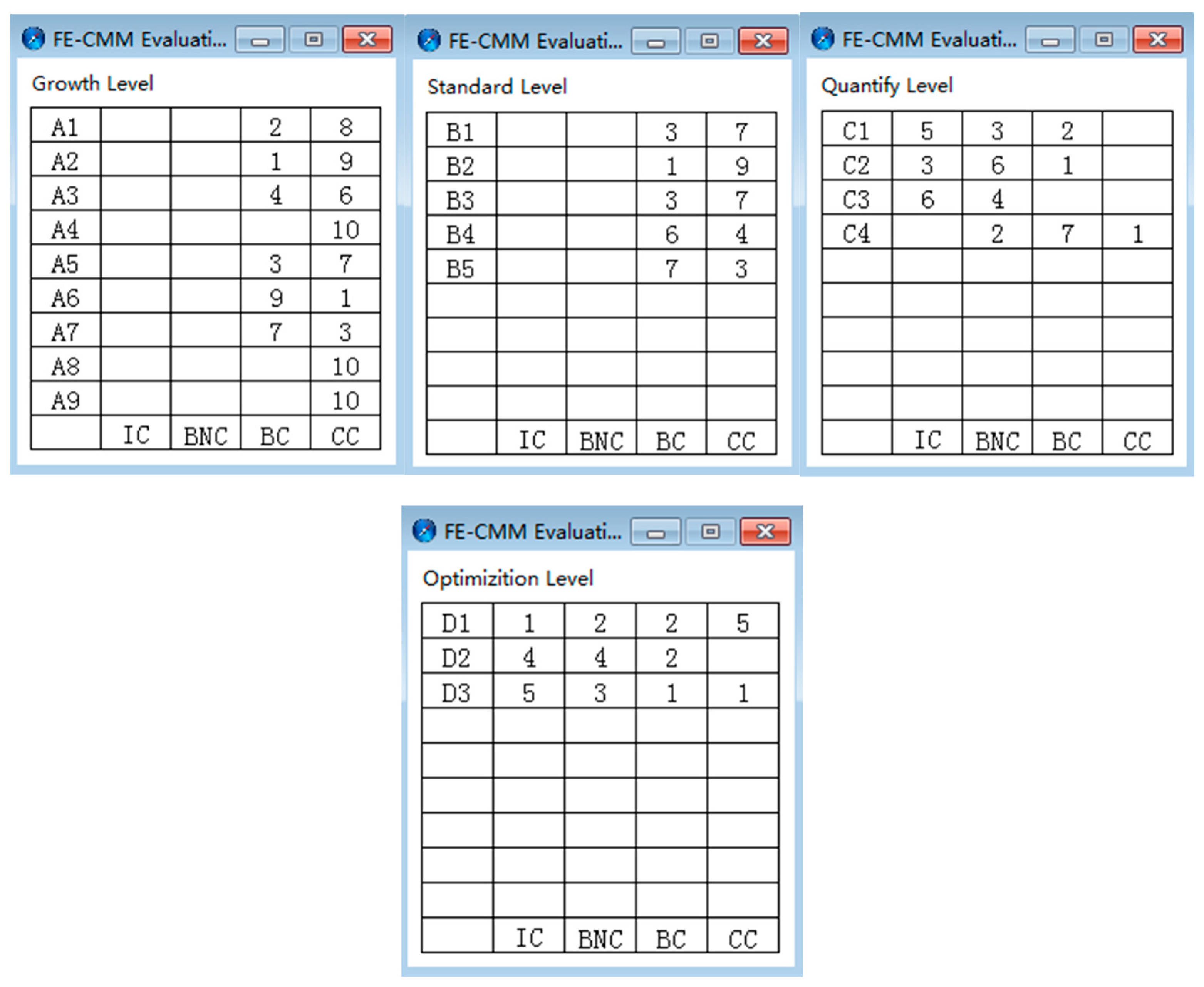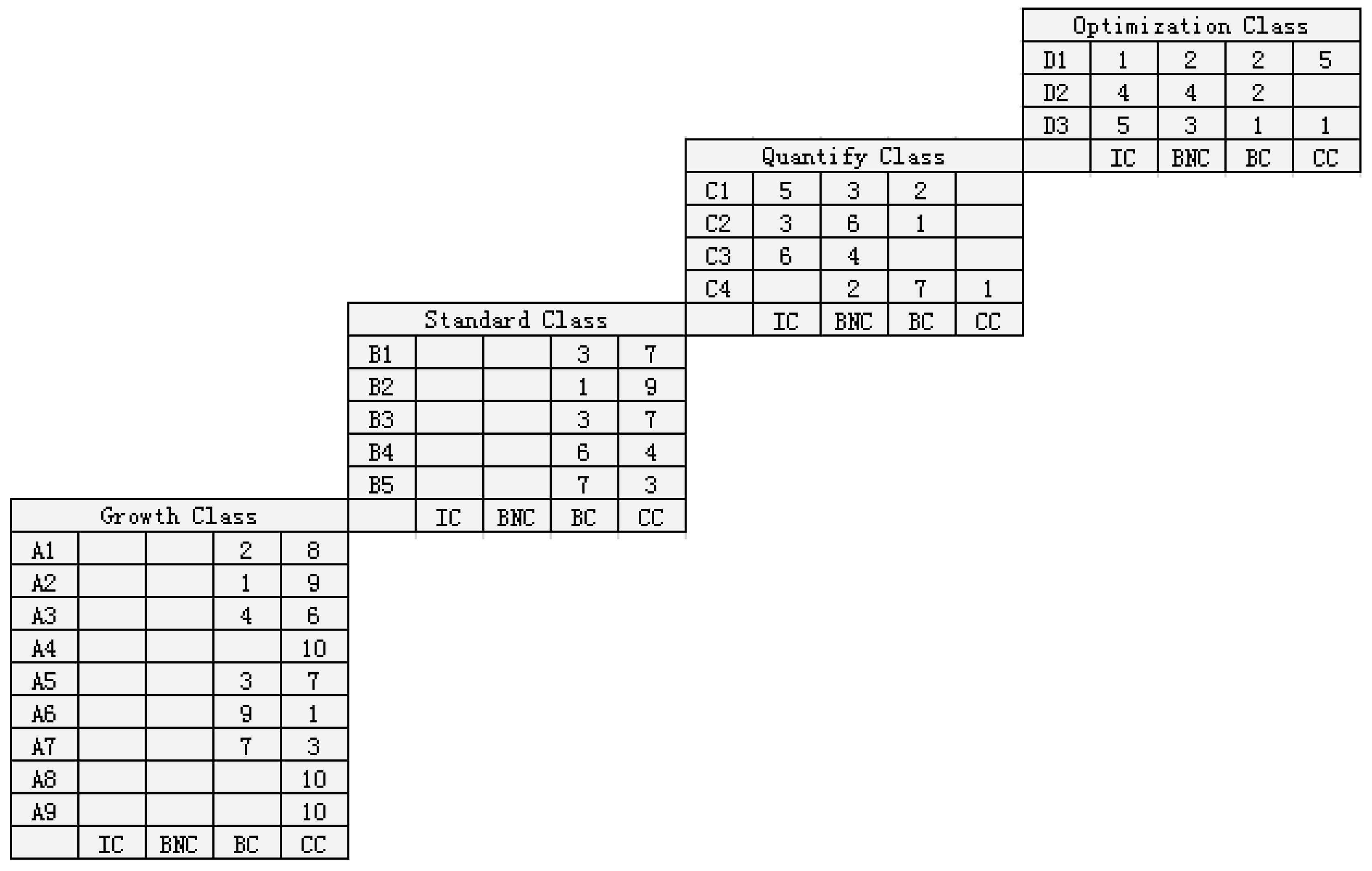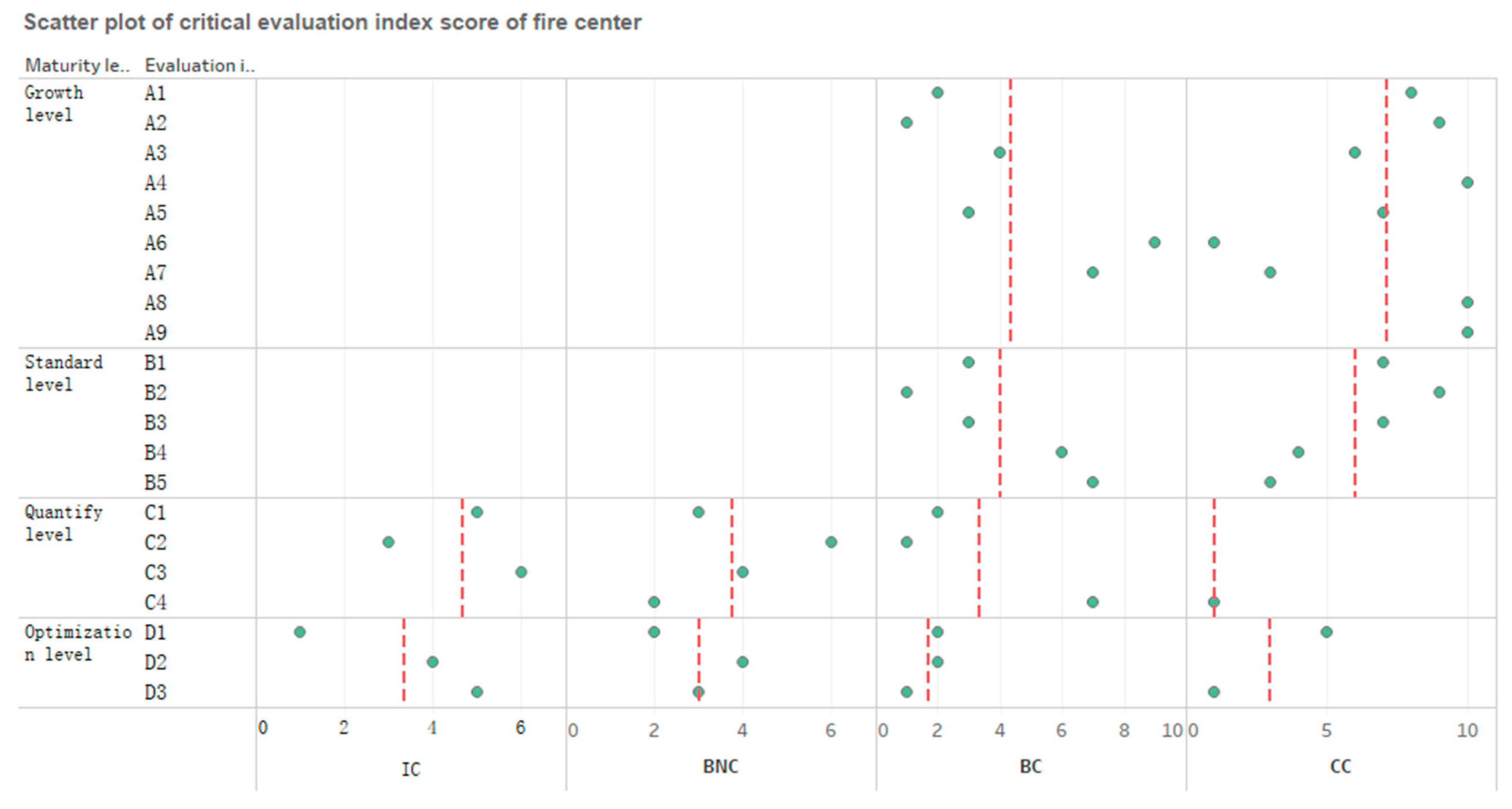1. Introduction
Smart cities are gradually becoming the center of urban construction [
1]. Public safety and environmental governance are important tasks in the construction of smart cities [
2]. Building fires represent one of the most common emergencies in the city, which threatens urban public safety and environmental governance [
3,
4]. Citizens are more diverse and clustered, building structures and urban environments are becoming more complex, and the standardization of fire management is higher, all leading to the fact that urban fire prevention requires more attention, and fire rescue is becoming more complicated, thereby increasing the difficulty of urban fire emergency management [
5,
6]. The refined management and ex ante control of building fire is gradually becoming the focus of research with the development of science and technology to reduce the loss of life and property [
7].
The existing research on fire emergency mainly focuses on three aspects: (1) researching new specific problems, (2) applying and optimizing new methods, and (3) focusing on the practicality and intelligence of the results, which is always reflected in system integration and platform development. Under the umbrella of new specific problems, Kwok et al. [
8] highlighted the role of Vancouver Fire and Rescue Services in the coordinated hoarding response of the city. In order to better understand the movement during stairwell evacuations, Peacock et al. [
9] provided stair movement data during fire drill evacuations of office and residential buildings to test the predictive capability of building egress models. In terms of new methods and method optimization, Zhang et al. [
10] proposed a probability-based Monte Carlo life-risk analysis model to assess the probability of injury and death in fires. Cao et al. [
11] presented an extended multi-grid model to study pedestrian movement and exit selection in fire. In terms of intelligence development, Chen et al. [
12] proposed a building information model (BIM)-based visualization and warning system for fire rescue. Cheng et al. [
13] built a BIM-based intelligent fire rescue system, which integrates personal positioning information, evacuation/rescue path optimization, and move boot device information. However, most researches ignored ex ante control of fire emergency.
Emergency response capability evaluation (ERCE) is essential to improve the ex ante control of fire emergency management. For example, Liao et al. [
14] proposed a hesitant fuzzy linguistic preference utility TOPSIS (Technique for Order Preference by Similarity to an Ideal Solution) method to select the best fire rescue plan, whereby an emergency response evaluation could also help managers discover the best plan. However, the current ERCE studies ignore the fact that the improvement of emergency response capability is a gradual process, and the research results of ERCE lack practicality and intelligence to some extent, suggesting a need for improvement [
15,
16].
Maturity refers to the ability to characterize the development of things from a quantitative perspective. The capability maturity model (CMM) originated from software development management, which considers the processional nature of emergency management optimization [
15]. Most maturity evaluation studies are limited to obtaining the maturity level, while the results of the CMM not only get the maturity level, but also more intuitively demonstrate the current and future tasks in the optimization path. The establishment of a fire maturity rating system based on CMM can solve the shortcomings of previous studies that ignored the improved process. As for the practicality and intelligence of the research results, building information modeling (BIM) technology has the advantages of information integration, full process control, and visualization, which provides technical support for the prevention and the control of potential hazards. In actual building fire rescue, more and more advantages of BIM technology are being used to guide the fire rescue, such as visual process management. Integrating a fire emergency response capability maturity (FE-CMM) system into a BIM platform can further realize information integration and facilitate fire rescue. Therefore, the establishment of a building fire rescue system based on CMM and its integration into the BIM platform can solve the problems that most previous research ignored, addressing the improved process and the weak practicality and intelligence of results [
17].
Thus, in order to accurately obtain the maturity level of a fire emergency, this study proposes and establishes a new building fire emergency maturity evaluation system based on the CMM for the first time to solve the problems that most previous researches ignored. In order to improve the process and the practicality of the system, a BIM-based evaluation plug-in was developed to improve the intelligence of the system, so as to improve the practicality of the system. Finally, an empirical study was conducted according to data from a fire center in a certain area to demonstrate the usefulness of the system and plug-in. This paper provides researchers and fire management units (especially the fire department) with a continuous improvement method for fire emergency management, and contributes to urban public safety and environmental governance.
2. Literature Review
There is a lack of research on urban fire emergency response capability at present, and comprehensive research on the evaluation of emergency response capability in other fields illustrates that the methods have certain limitations, as shown in
Table 1. One is that the commonly used qualitative methods are subjective and affect the accuracy of the results. For example, Ali et al. [
18] conducted a risk assessment study on a large manufacturing company based on analytic hierarchy process (AHP) and the Fine–Kinney risk assessment method. Ju et al. [
19] proposed a hybrid fuzzy method consisting of a fuzzy analytic hierarchy process and binary fuzzy language to evaluate the emergency response capability. Liu and Zhang [
20] proposed a multi-objective location selection mode based on AHP theory to optimize emergency response time. Wu et al. [
21] established an urban community fire ERCE system and comprehensive evaluation model based on a fuzzy analytic hierarchy process. However, to some extent, all the methods of these researchers are inherently subjective.
The second limitation is that some researches ignore the processional nature of emergency management improvement, which is usually reflected in the fact that the researches are usually limited to one-time measures to improve the emergency response level. For example, Zhou et al. [
22] proposed a timed colored hybrid Petri net (TCHPN) method to evaluate different emergency response actions based on their efficiency in preventing or delaying the propagation of domino effects. Ke et al. [
23] established an evaluation model of the emergency capability of earth-rock cofferdam construction. Jin et al. [
24] established an evaluation index system for marine oil spill response capability based on an assessment of the advanced experience of domestic and foreign emergency capability, but also ignored the process of improvement of emergency management.
The third limitation is that the research results are often insufficiently combined with practice, and the intelligence of the results is not sufficient, which is not conducive to practical application and promotion. Ping et al. [
25] presented a model to estimate the probability of successful escape, successful evacuation, and successful rescue on offshore platforms. Song et al. [
26] built a measurable index system for the evaluation of campus emergency management capacity based on a principal component project method; however, they ignored the practicality of the improvement results. To some extent, all of the researches had complicated processes and insufficiently combined outcomes with practice and intelligence.
The CMM fully considers the improvement process, and some scholars tried using CMM to solve ERCE and achieved good results. Ji et al. [
27] constructed a maturity model of emergency management capability evaluation for college emergencies based on CMM, and established a quantitative maturity level test method based on the variable weight method and fuzzy theory. Nie and Han [
28] constructed an emergency logistics capability maturity model based on CMM, and analyzed the main influencing factors using a Bayesian network. At the same time, BIM technology is increasingly being used in emergency capability evaluation because it can improve the intelligence of results. Li et al. [
29] introduced a BIM-centric environment-aware beacon deployment algorithm to locate first rescuers and trapped people in a building fire emergency scenario. Zang et al. [
30] proposed a BIM-based immersive game environment method to study the interaction between people and buildings during evacuation. Cheng et al. [
31] developed a simulation model based on BIM technology to evaluate different evacuation plans and improve the reliability of evacuation plans.
In summary, some urgent problems still exist in the current researches on ERCE in various fields, such as insufficient practice and intelligence, and there is little research on urban building fire emergency response capability. The CMM and BIM technologies brought new ideas to ERCE research. Applying CMM and BIM technology to building fire emergency response capability evaluation is a direction which is worth further investigating.
4. FE-CMM Evaluation Plug-In Design
To improve the intelligence and practicality of the FE-CMM system, a FE-CMM evaluation plug-in was developed with C# programming language based on the Revit 2016 software platform (Autodesk, San Rafael, CA, USA).
Figure 1 depicts that, firstly, the researchers, such as the university or social fire emergency management investigation team or fire department, distribute the key process area implementation score questionnaire and research-related materials to college experts, the fire brigade, building security personnel, and other building fire-related management personnel, such as emergency mechanisms and emergency plans. The questionnaire is a disordered key process area that is to be scored, whereby experts grade each key process area based on provided material or practical experience. After collecting and counting survey questionnaires to obtain a key process area score, the user is required to import the key process area score into the plug-in using the “expert score” function. Next, the user can also modify it in the Revit software, and then click on the “FE-CMM evaluation” function to output the KPA profile. Then, the emergency manager obtains the fire emergency maturity level and the defects in the current emergency management according to the output KPA profile, which provides a targeted improvement direction for improving the fire emergency response maturity level.
Figure 2 depicts three functions of the FE-CMM evaluation plug-in, including the introduction of the plug-in, data import, and the evaluation of the plug-in.
As shown in
Figure 3, upon clicking the FE-CMM Evaluation function of the plug-in, the KPA property setting interface will pop out. Then, upon entering the evaluation indicator number of each level, the plug-in will select the maximum number of evaluation indicators as the final row number of KPA charts suitable for all maturity levels. In addition, the user can choose a certain maturity level to output a KPA figure. However, the FE-CMM evaluation plug-in can only output one KPA map of maturity level at a time, instead of outputting KPA profiles of all maturity levels.
5. Empirical Research
In order to verify the feasibility and rationality of the fire FE-CMM evaluation system, a fire center was selected as the research object to evaluate the fire emergency response capability. The fire center is located in a relatively developed area where old-fashioned buildings account for a large proportion of the buildings. In addition, there are a great number of factories and enterprises; thus, the proportion of fires is higher than that in most similar jurisdictions. Therefore, the fire emergency response of the fire center is relatively more frequent, and the fire emergency experience is rich, which are the main reasons for the object selection.
To implement the research, a team of 14 experts, including 10 school-age research experts and four fire department managers, was organized at the beginning. The expert team was divided into two groups, due to the school enterprise research experts (group A) lacking experience in actual situations and the fire center management personnel (group B) lacking theoretical knowledge and objectivity. Group B serves as a reference group and plays a complementary role in fixing the result of group A, and this can effectively avoid the shortcomings of the two groups.
Group A judged the achievement degree of the 21 key process areas based on the provided materials, and there were four achievement degrees as follows: incompatible (IC), basically not compatible (BNC), basically compatible (BC), and completely compatible (CC). Group B assigned a specific score between 1 and 10 to each realization degree of the 21 key process area under the premise that they were unaware of the conversion indicator, because they were front-line managers. If they chose the achievement degree directly, they were easily influenced by the role and made non-objective judgments. Then, the investigator converted the score result into the achievement degree according to the indexes in
Table 9. If the results of the key process areas from two groups were inconsistent and affected the final maturity level determination, there was a multi-party discussion to determine the achievement degree. Finally, as shown in
Figure 4, the judgment chart of each maturity level could be obtained by importing the judgment result of group A into the plug-in, and Group B obtained a situation determination table, as shown in
Table 10. As seen in
Figure 5, the final KPA chart can be obtained through the above process, allowing the comparison of the results of the two groups.
Figure 6 is drawn in order to facilitate the analysis. The following six aspects of the findings were obtained through the aforementioned research of the FE-CMM system:
(1) There was no difference between the results obtained by group A and group B, which led to no difference in the fire emergency response maturity level. The KPA profile of group A had dual credibility of school enterprise research experts and fire-fighting center managers due to the IC and BNC not being shown in the results of A1–A9 and B1–B5.
(2) As can be seen in
Figure 4 and
Figure 5, the fire emergency response capability of the fire center was at a standard level. It can be seen more intuitively from
Figure 6 that there were a few points located with IC and BNC in the abscissa, where the ordinates were growth level and standard level, while there were many points located at the area denoting the quantifying level and the optimization level for IC and BNC. This also indicates that the target maturity was at the standard level.
(3) Although the maturity level of fire center reached the specification level, there were still problems in urgent need of a solution in B4 (fire drill) and B5 (summary promotion). In addition, A6 (technical use) and A7 (tracking monitoring) also require improvement in the growth class.
(4) There are still many problems to be handled if the maturity level is to reach the quantifying level. C1 (resource allocation), C2 (state of affairs control), and C3 (time management) require continuous improvement in the future, in addition to A6, A7, B4, and B5. In particular, the improvements of C1 and C3 require a lot of time and capital. There is no in-depth condition to grasp the emergency time and resources in a quantitative way, caused by an insufficient understanding of technology, quantitative rescue, and the inactive application of new technology.
(5) D1 performed well in the current optimization level, indicating that the fire department center made an effective adjustment in the rescue process after fire. However, in order to improve it to the optimization level, it is necessary to improve D2 (technical optimization) and D3 (preventive optimization), which are largely insufficient at present.
(6) In addition, as can be seen in
Figure 6, the dashed line shows the average score of the IC, BNC, BC, and CC at each maturity level. Under the premise of only focusing on the average number (the dashed line), the scores of IC and BNC increased, while the score of CC was reduced with the improvement of maturity level, which is reasonable. At the same time, the scores of IC and BNC at the growth level and standard level were zero according to
Figure 6, which helps visualize the maturity level more, especially when there are a lot of evaluation indexes.
